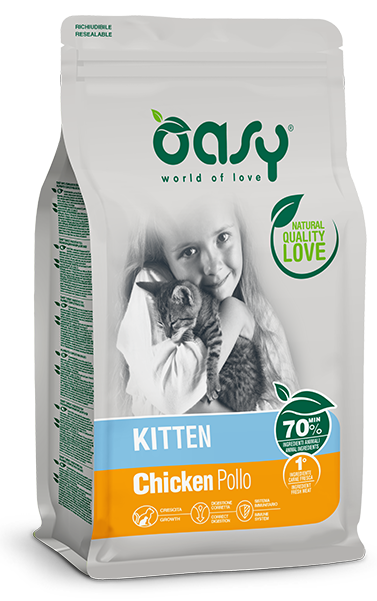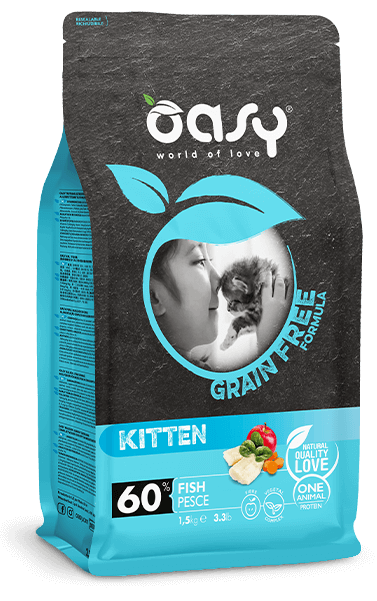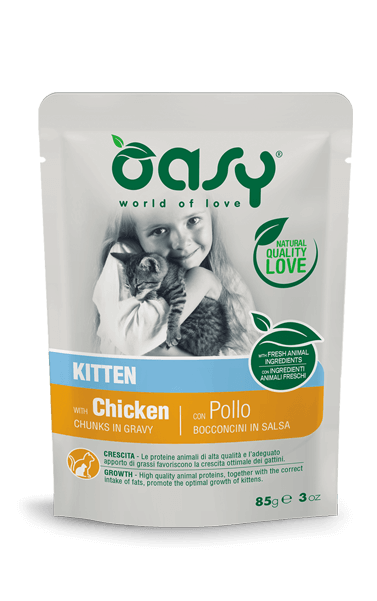Find out how to handle feeding your 2-month-old kitten with tips for healthy, balanced growth. Food quantities, meals per day and more.
Proper Nutrition for Kittens, just like the
nutrition of a puppy, requires special attention and care. It is
essential to ensure
healthy growth and optimal development. During this
delicate phase, kittens transition from mother’s milk to solid food, making it
crucial to provide them with a balanced and appropriate diet.
In this article, you will discover
5 essential tips for feeding a 2-month-old kitten, including dry and wet food recommendations, the right portion amounts, and feeding frequency.
1. A High-Protein Nutrition for Healthy Growth
During the
first months of life, kittens require a
high-protein diet to support muscle and bone development. Choosing a
complete and nutritious food is crucial. We recommend feeding your kitten with our
Kitten Chicken or
Kitten Grain Free Formula Fish, which provide the
ideal protein intake and the necessary energy for a strong and healthy physique.
High-quality proteins, such as those found in Oasy foods, are essential for kittens' nutrition as they support tissue formation and ensure harmonious growth in their early months.
2. Proper Nutrition for Brain and Cognitive Development
A
well-balanced nutrition in the
first months of life also helps
enhance learning ability and curiosity, positively influencing your kitten’s behavior and interaction with the environment.
While
dry food promotes balanced growth by providing
essential nutrients for
physical and mental development,
wet food is ideal for supplementing their diet and ensuring proper hydration.
3. Food Should Always Be Available
During the
first few months, it’s crucial to maintain a
flexible feeding routine that meets kittens’ nutritional needs at all times. Kittens need
small portions of food available throughout the day to prevent long fasting periods that could negatively impact their development.
Providing both dry and wet food ensures that your
kitten can eat whenever needed, without overfeeding. And don’t forget water—it should always be available!
4. Small and Frequent Meals
A
2-month-old kitten needs to eat at least 4-5
times a day, with
small and frequent meals to support
regular digestion and consistent energy levels.
If you’re wondering how often a kitten should eat, the answer is simple:
more frequently than adult cats. That’s why leaving dry food available at all times, even overnight, is recommended. Over time, kittens will gradually transition from mother’s milk to solid food.
5. A Variety of Textures for a Balanced Diet
Making mealtime enjoyable for a kitten is important!
To
diversify your kitten’s diet, alongside specially formulated dry food, you can also introduce
different textures of wet food, such as
Caprice Mousse for Kittens. This will prevent your kitten from getting bored and keep mealtime exciting.
If your kitten prefers
irresistible natural flavors, you can also try
More Love Chicken with Egg, a meal that combines taste and nutrition to satisfy even the most discerning palates.


